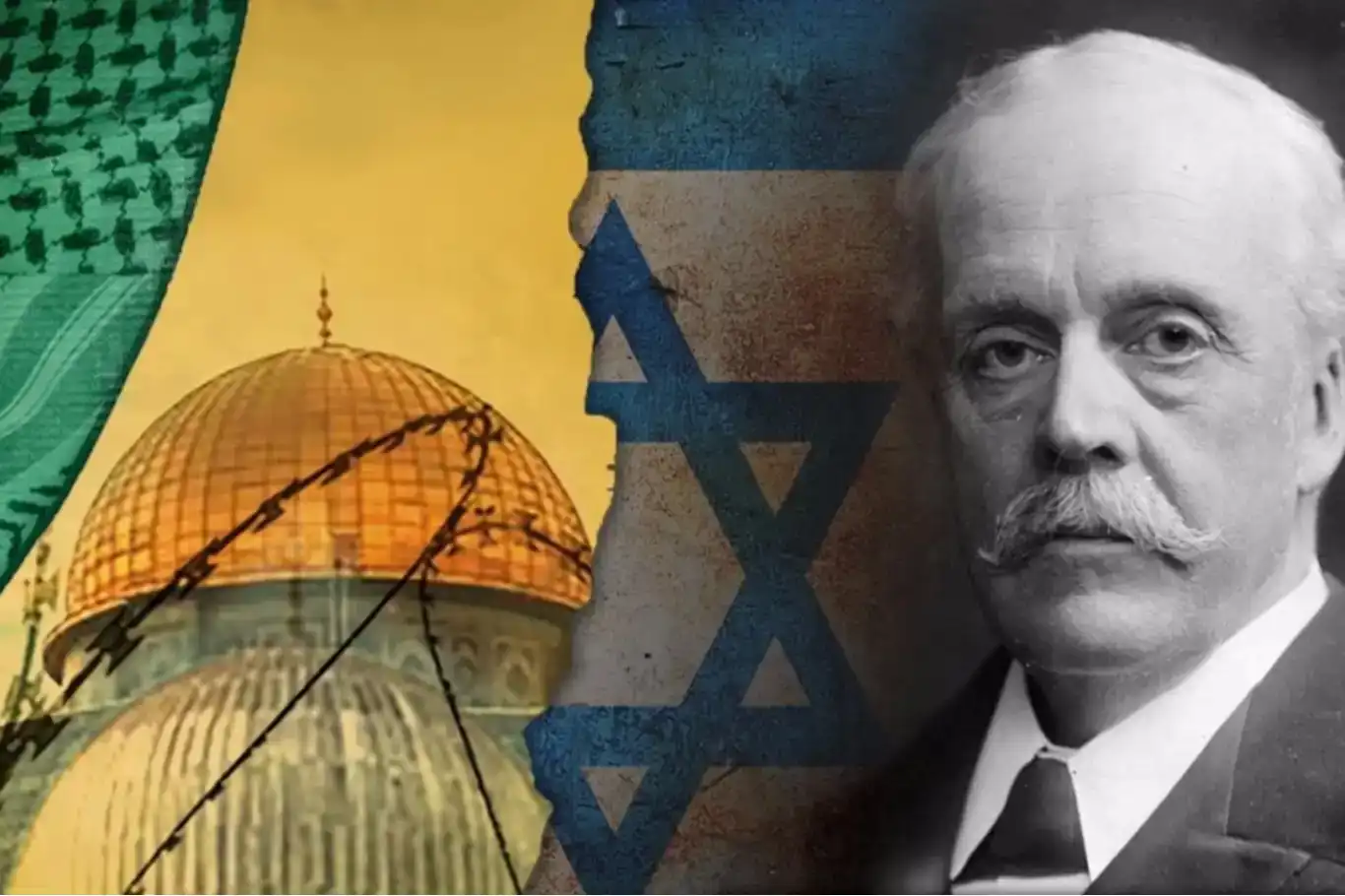108 years of the Balfour Declaration: Colonial legacy, displacement, and Palestinian resistance


On November 2, 1917, British Foreign Secretary Arthur James Balfour sent a short letter to Zionist leader Lord Rothschild, pledging Britain’s support for a Jewish homeland in Palestine.
The Balfour Declaration, a mere 67-word document, effectively endorsed Zionist settlement in Palestine at the expense of the indigenous Arab population. At the time, Palestine had an estimated population of 660,000, including 600,000 Muslims and Christians and 60,000 Jews. The declaration set the stage for the systematic displacement of Palestinians and the establishment of a state whose formation involved decades of occupation, violence, and dispossession.
During the British Mandate, Jewish immigration and land acquisition accelerated, and the British administration facilitated the establishment of Jewish settlements. The 1922 Mandate, recognized by the five permanent members of the League of Nations, formally enshrined these policies. British High Commissioner Herbert Samuel, a staunch Zionist, oversaw the administration, ensuring that the Balfour Declaration’s directives were implemented.
The declaration’s issuance coincided with the final phase of World War I in Palestine. By December 1917, Ottoman forces had retreated after a 40-day defense of the region, and Jerusalem fell under British occupation. The Balfour Declaration became the diplomatic and legal foundation for subsequent Zionist claims, further supported internationally by the United States, France, and Italy in the years following.
“The Balfour Declaration was more than a letter; it was a colonial promise that paved the way for decades of displacement and suffering for the Palestinian people,” said analysts reviewing the 108-year history.
Following the declaration, Jewish migration to Palestine increased, and organizations such as Haganah, Irgun, and Stern were established, using force and intimidation to expand territorial control. On May 14, 1948, the Zionist leadership proclaimed the establishment of the state of Israel, immediately following the withdrawal of British forces. This event marked the beginning of the Nakba, commemorated annually by Palestinians as the day of disaster and dispossession.
Recent developments highlight that the legacy of the Balfour Declaration continues. On Monday, November 3, 2025, dozens of settlers entered Al-Aqsa Mosque under heavy Israeli police protection, according to the Islamic Waqf Department and the Wadi Hilweh Information Center. Settlers reportedly conducted Talmudic rituals in the eastern courtyard and performed provocative tours while Israeli forces restricted Palestinian access, retaining IDs and enforcing strict entry controls. Data indicate that over 10,800 settlers visited Al-Aqsa in October 2025 alone.
Local authorities and Islamic organizations continue to call on residents of Jerusalem and the occupied Palestinian territories to mobilize at Al-Aqsa, aiming to resist incursions and maintain control over the sacred site. The ongoing daily settler raids, excluding Fridays and Saturdays, are viewed as part of broader efforts to partition and dominate the mosque both spatially and temporally.
“From the Balfour Declaration to the present, Palestine has endured over a century of occupation, displacement, and systematic attempts to erase its identity,” experts note.
The 108-year history of the Balfour Declaration underscores how a short diplomatic note transformed the region, triggering waves of migration, conflict, and geopolitical maneuvering that continue to affect millions. As the Palestinian people commemorate this milestone, the international community faces renewed calls to recognize and address the enduring consequences of a century-old colonial promise. (ILKHA)
LEGAL WARNING: All rights of the published news, photos and videos are reserved by İlke Haber Ajansı Basın Yayın San. Trade A.Ş. Under no circumstances can all or part of the news, photos and videos be used without a written contract or subscription.
The European Union is grappling with an unprecedented escalation in drug trafficking, with officials estimating that over 100 tons of cocaine enter the continent each year—a figure that European security agencies admit may represent only a fraction of the true scale.
One year has passed since Yahya Sinwar, the legendary leader of Hamas in the Gaza Strip, was martyred in a direct confrontation with Israeli forces in Rafah.
Two years have passed since the morning that forever altered the course of the Palestinian struggle — the dawn of October 7, 2023, when the besieged enclave of Gaza broke through its prison walls in a thunderous uprising now etched into history as Operation Al-Aqsa Flood.